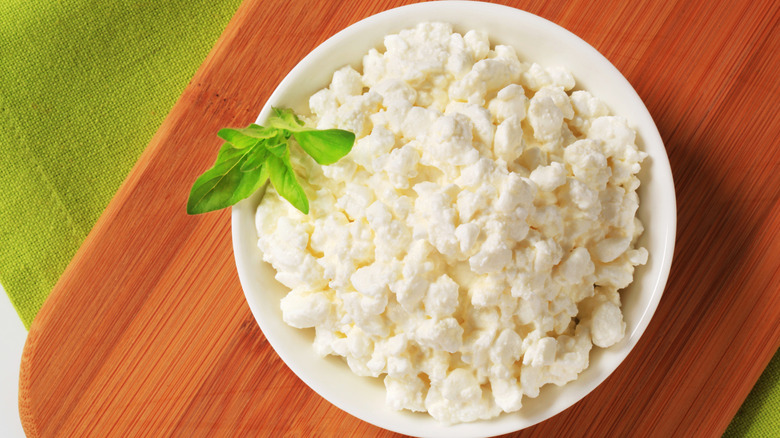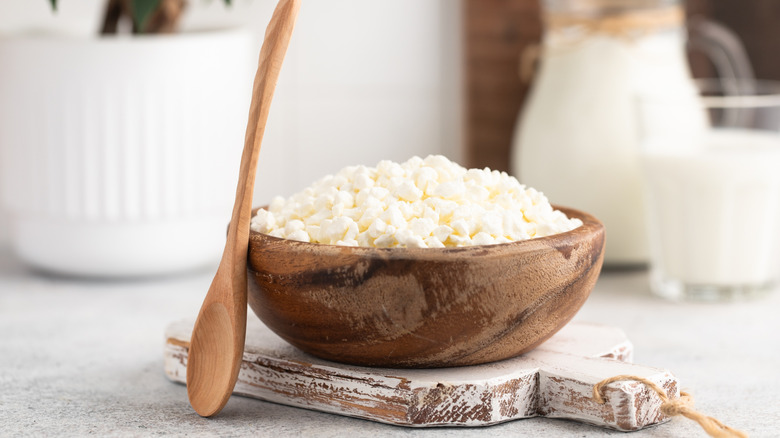Why Is The Texture Of Cottage Cheese Always So Inconsistent?
Cottage cheese is packed with protein, rich in B vitamins and calcium, is low in calories, and the fresh tangy dairy product is an undercover hydration booster, too. Some people can find the lumpy texture a tricky hurdle to overcome — but to make it even more complicated, the consistency can sometimes vary from one container to another, even within the same brand.
There are several reasons that may affect how creamy, thick, or watery the product appears, and that includes the way cottage cheese is made in the first place. Enzymes added to milk turn the sugars into lactic acid, and this, in turn, separates the milk solids (or curds) from the liquid whey. The curds, which are cut into pieces, heated, and drained before being mixed with cream, are the reason why cottage cheese has that lumpy texture. Cottage cheese comes in large or smaller curd varieties, and the larger curd types tend to have more moisture. The water content can affect how firm the cheese feels, and the amount drained may vary during manufacturing.
There are other factors at play, too. Cottage cheese is available in versions with differing percentages of fat, which can alter the texture and richness, and in flavored varieties, which may contain added sugars. It also has a long shelf life, and if it's not stored at a cool enough temperature of 40 degrees Fahrenheit at home, then it can continue to produce lactic acid, becoming more sour and watery.
Control the texture of cottage cheese by making your own
If you find the texture of store-bought cottage cheese too inconsistent, there are a couple of options: Whip it into submission, or make your own. Whipping cottage cheese is the easiest way to remove any textural issues — the lumps disappear, and you're left with a versatile light and airy product. Simply use your food processor or high-speed blender to pulse the mixture until it's smooth. You can always add a little olive oil for an even fluffier texture.
Alternatively, have a go at making your own cottage cheese at home, which isn't as daunting as it may sound. For the simplest version, just heat a cup of milk in a pan on the stove, add a tablespoon of vinegar, and stir it off the heat for a couple of minutes until you start to get curds forming. Drain it, and add salt to taste. For something that more resembles store-bought, add a couple of drops of rennet to your heated milk and leave it for a few hours before gently cutting, heating, stirring, and straining. It will last up to four days in the fridge.
Whether blitzed smooth or homemade, cottage cheese can be used in all sorts of ways, from adding it to smoothies to stirring it into your mac and cheese. You can even add cottage cheese to scrambled eggs for a hearty breakfast or brunch dish with an extra boost of protein.


